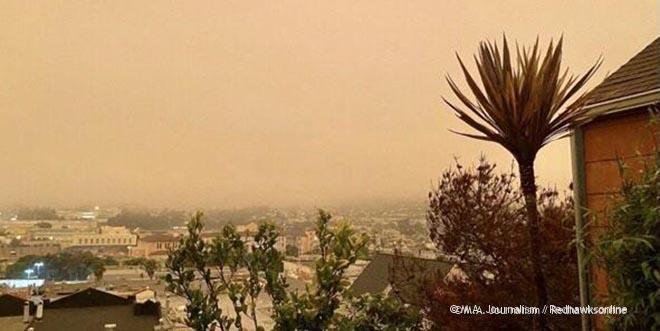With wildfires slowing, other threats are posed
With wildfires slowing to an end as the West Coast enters the wet season, other threats are being posed. The severe wildfires raging through the West Coast of the United States of America have burned through around 4 million acres already, according to the California Department of Forestry and Fire Protection. The wildfires were caused by a series of lightning strikes and little rain, and a smoke-generating pyrotechnic device that was used for a gender reveal party. The west coast of the United States tends to be very hot and dry during the summer and with powerful winds, fires are likely to occur.
With all of that land burned, the soil became more water repellent. This is because the burnt trees leave waxy compounds on the forest floor. The usually absorbent soil is shedding more water. With water repellent soil and extra rainfall due to climate change, the water doesn’t soak in and runs off the burned ground.
You may have heard or read that climate change brings drought, however, it also brings more rain.
“If air temps are higher, evaporation of water from the land to the air will occur more quickly and more water will be held in the atmosphere,” said Carmella Whaley, environmental studies teacher. “That can lead to more precipitation when conditions are right.”
Landslides can be triggered by constant and consistent rainfall, so much that it creates a river pulled by gravity down a slope and carries rocks and dirt with it. Because there is no ground cover from the fires, soil is eroded making it easier for landslides to occur.
Debris flows are more common after wildfires because the fires reduce the hill-slope’s roughness and help the slurry pick up speed. They can be caused after a small amount of intense rain. These flows are moving masses of loose mud and other earthly substances. The roots from the burned trees lose their strength to hold the soil in place therefore causing the debris to flow.
Many animals rely on the timber for shelter and a safe home to keep them alive, and in order for the ecosystem to remain healthy, the animals need to be healthy. This is why it matters a lot that we take care and clean up after the wildfires occur.
Landslides and debris flows aren’t the only dangers being brought up after wildfires. Water quality is being affected greatly by the wildfires. Released toxic chemicals from the fires get into plumbing systems and pipes, making their way into people’s homes and drinking water. Plastic pipes in citizen’s houses release toxins into the air when they are burned or melted. When the fire damages other pipes, they act like a vacuum, sucking in the toxins and smoke.
“Unsafe drinking water can affect people in two ways: short-term effects and long-term effects,” said Whaley. “Short-term effects are considered to be the result of drinking or being exposed to unclean water, that is, water contaminated by disease-causing bacteria or other microbes.”
Although some people develop symptoms of short-term effects they are still not in the clear for escaping the long-term effects.
“Long-term effects are the result of drinking water that is contaminated with toxins, carcinogens, poisons, etc. While these contaminants may also cause an immediate illness, their long-term effects may include chronic diseases like cancer or lead to neurological defects,” said Whaley.
Landslides, debris flows, and water quality are all instances of the aftermath of wildfires. While we might not be directly affected by wildfires here in Minnesota, we can still inform those who are elsewhere.
“The short- and long- term effects of exposure to unsafe drinking water may be irreversible to a person’s health and well-being,” mentioned Whaley. “Perhaps one solution to all these problems might be to research, invest in, and build cleaner and greener industries to fuel our lifestyles and our economies.”

